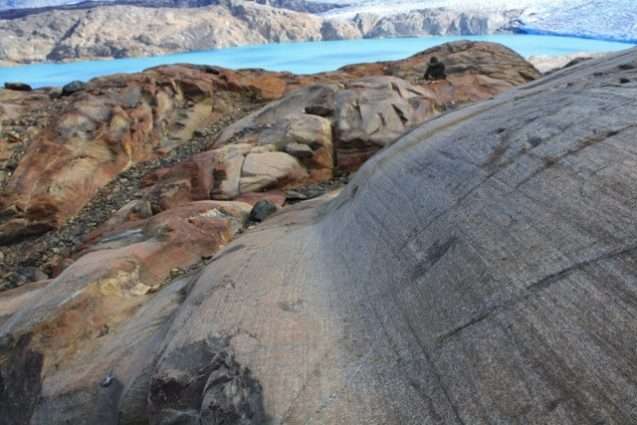Iron chemistry matters for ocean carbon uptake

For many years, scientists have speculated that seeding the ocean with iron might help to stave off climate change. Iron in seawater promotes the growth of phytoplankton, which in turn devours carbon dioxide from the atmosphere through photosynthesis. Iron basically allows the ocean to soak up carbon.
But only dissolved iron, not the undissolved particle forms, was thought to stimulate phytoplankton growth, despite iron's low solubility in seawater and the abundance of particulate iron in the ocean. Further, the quantity of iron rather than its chemical signature was thought to determine the rate of phytoplankton growth.
Now an interdisciplinary team of scientists led by Elizabeth M. Shoenfelt and Benjamin Bostick of Columbia University's Lamont-Doherty Earth Observatory has discovered that particulate iron does stimulate phytoplankton growth, and that the chemical form that particulate iron takes is critical to ocean photosynthesis—not just the quantity of iron available. The team found that the iron in dust and sediment that comes from glaciers is better at promoting phytoplankton growth and photosynthesis than iron found in dust from other sources. This means that glaciers may play a larger role in the carbon cycle than had been thought.
"It's not that soluble iron doesn't matter, but particulates, which are the biggest components of the iron in the ocean, can do quite a bit," said Bostick.
The findings, published in the June 23 edition of the journal Science Advances, show that in lab culture, a well-studied coastal diatom grows equally well with particulate iron versus soluble iron, and up to 2.5 times faster, and with greater photosynthetic efficiency, when fed a form of particulate iron produced by the grinding of glaciers against rock. The authors estimate that the carbon uptake rates of the diatoms consuming glacier-produced iron would be five times higher than those consuming non-glacier iron when enhanced growth and photosynthesis rates are combined.
Earlier research had shown that during glacial periods, ocean concentrations of iron tend to rise. Glaciers grind up iron-rich bedrock that lies beneath the ice when they extend and recede through seasonal cycles. The resulting iron dust is carried on the wind out to sea. But no one had connected the chemical forms of iron found in glacier-produced dust versus other forms to phytoplankton photosynthesis.
"Basically glaciers make fertilizer for the ocean," said Bostick. "We show that it's not just how much dust the glaciers make, but the fact that the glaciers grind up certain kinds of rocks that makes a big difference."
The research team took the so-called glaciogenic dust they used in lab culture from South America's Patagonia region. But they said that the mineralogy of glaciogenic dust is similar around the world. The water they used came from the Southern Ocean.
The team's results set up a number of avenues for future research. These include studying the geological record to identify changes in the chemical forms of iron available in the ocean over time, and matching those to glacial fluctuations, said Bostick. He said further study could use genetics to study how diatoms use iron.
"We'd like to know mechanistically how it's happening," said Bostick. "This allows you to understand how the system can be manipulated, so we can know how the environment would respond."
More information: High particulate iron(II) content in glacially sourced dusts enhances productivity of a model diatom Science Advances 23 Jun 2017: DOI: 10.1126/sciadv.1700314
Journal information: Science Advances
Provided by Earth Institute, Columbia University
This story is republished courtesy of Earth Institute, Columbia University: blogs.ei.columbia.edu .


















